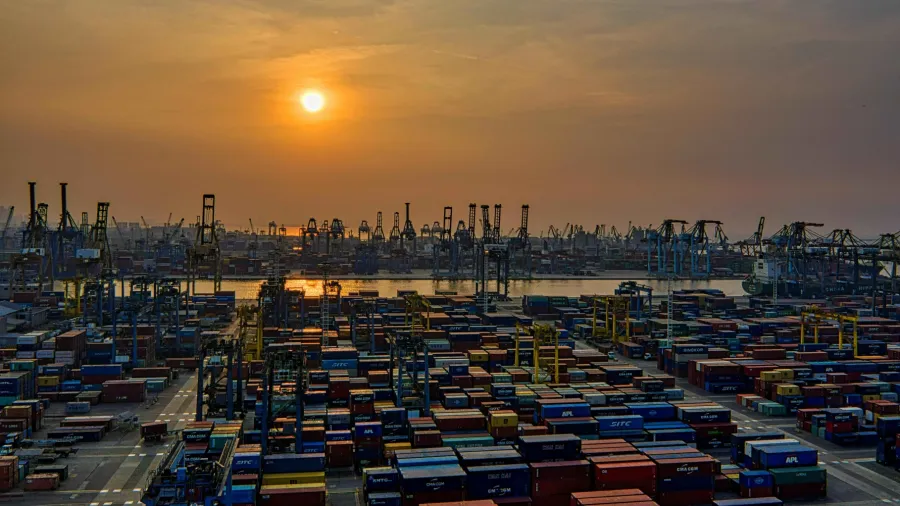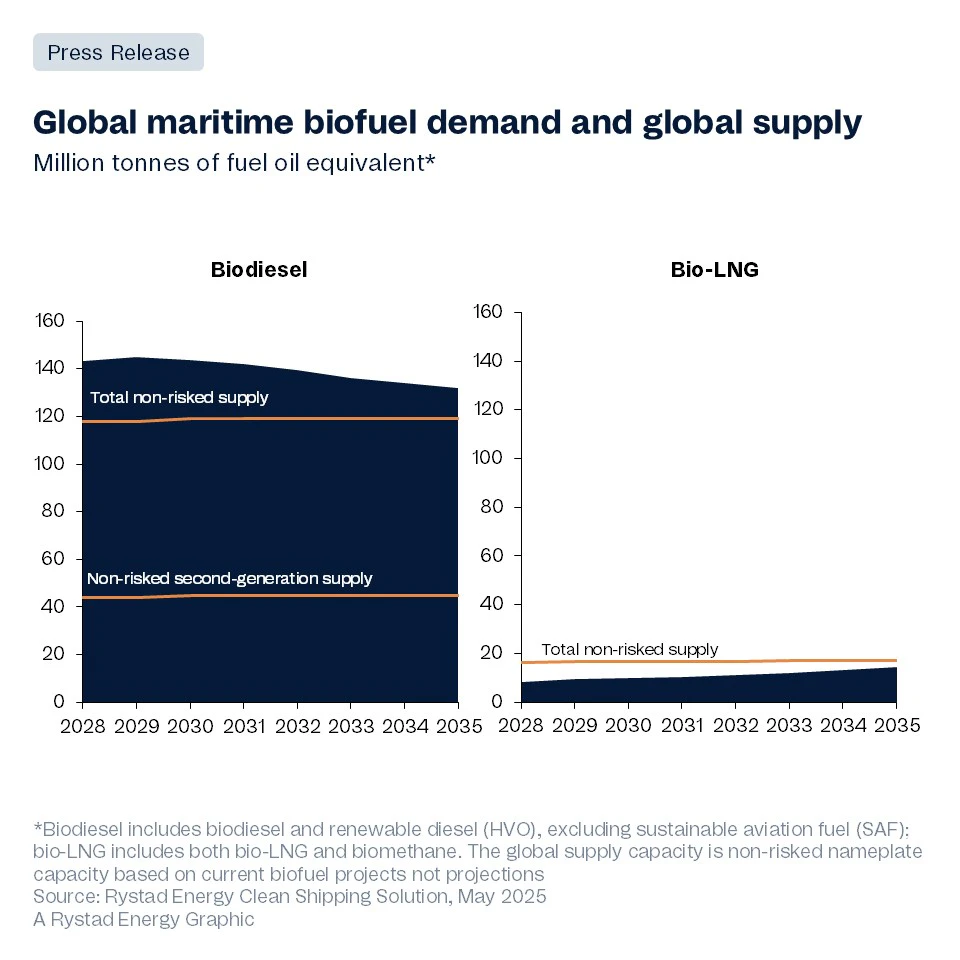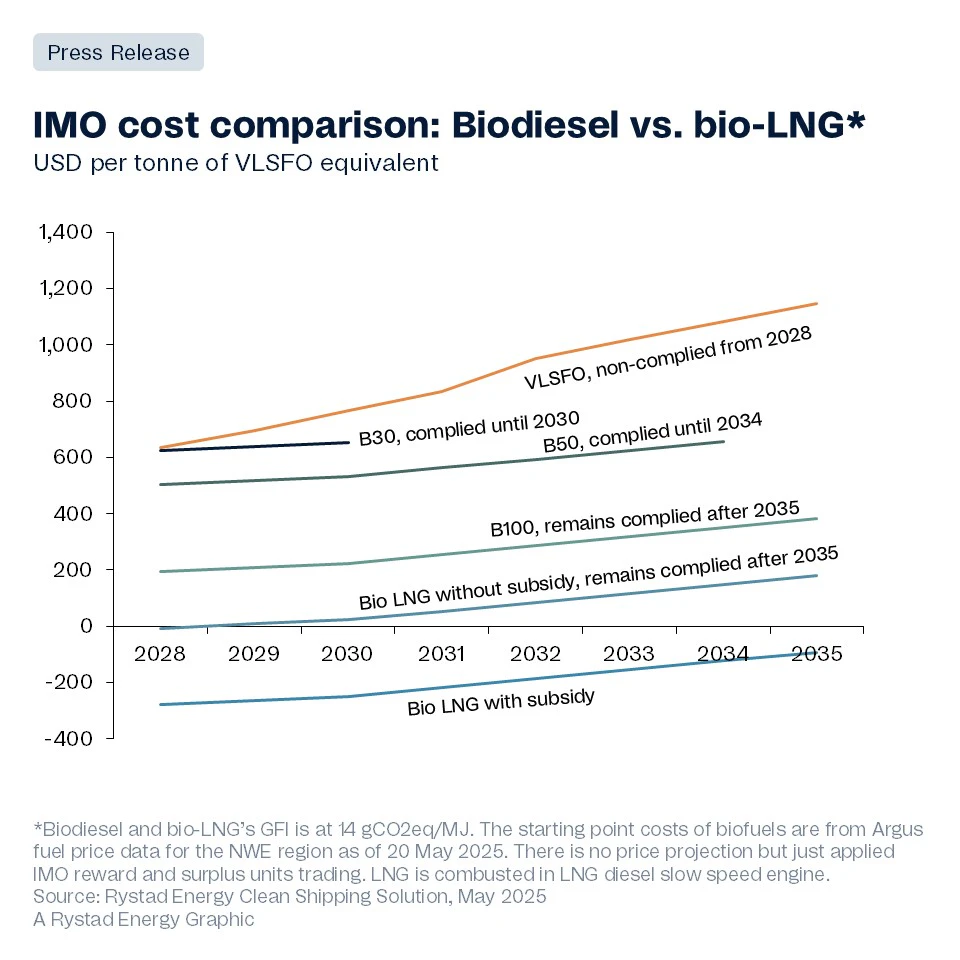
Cleaner shipping faces headwinds from limited biofuel
Global demand for biodiesel in shipping could exceed 140 million tonnes without limitations.
The capacity to produce biofuels, such as biodiesel and bio-liquefied natural gas (bio-LNG), may not be enough to meet the global shipping industry’s demand to attain its net-zero carbon emissions goal, according to Rystad Energy.
In its analysis, Rystad said “unconstrained biodiesel demand exceeds total supply and the outlook for bio-LNG is equally restricted, in both allocation and production.”

The shipping industry has set a net-zero greenhouse gas (GHG) emissions target by or around 2050. This goal is being supported by the adoption of biofuels since these could be more cost-effective compared to traditional marine fuels such as very low-sulfur fuel oil, particularly when aligned with the low-emission thresholds established by the International Maritime Organization’s (IMO) Greenhouse Gas Fuel Intensity (GFI) standard.
If there are no supply constraints, Rystad said global demand for biodiesel in shipping could exceed 140 million tonnes of fuel oil equivalent by 2028. Total biofuel production, however, could only peak at around 120 million tonnes even under ideal conditions.
Applying sustainability criteria, which means prioritising second-generation biofuels, the potential drops to 40 million tonnes.
“Whilst projected demand is relatively modest at 16 million tonnes in fuel oil equivalent by 2028, the apparent surplus in supply is misleading,” said Junlin Yu, senior data analyst, shipping at Rystad Energy.
Yu noted that over 84% of global biomethane is already committed to electricity generation, with an additional 10% allocated to road transport. Other sectors, including maritime, are only left with six percent of the supply.
“This is a supply crunch that the shipping industry cannot afford to overlook,” Rystad said, noting despite other alternatives such as ammonia and methanol, these may still not be ideal since they come with high costs and infrastructure challenges, leaving many shipowners hesitant and waiting for clearer market signals.
Biofuels remain as the most practical choice to meet IMO’s emissions standards. Blending them at 30% or 50% can help meet emission targets in the short term, whilst fully switching to 100% low-emission biofuels offers the greatest long-term savings.
Bio-LNG is an even cheaper option than biodiesel, particularly when supported by government subsidies.
However, this fragile transition needs careful planning to ensure the industry will be able to comply.

“To navigate the changing regulatory landscape, shipowners must act quickly, securing dependable biofuel supplies and aligning with GFI targets. In the race for cleaner shipping, success hinges not just on choosing the right fuel, but on securing it ahead of competitors,” Yu said.











